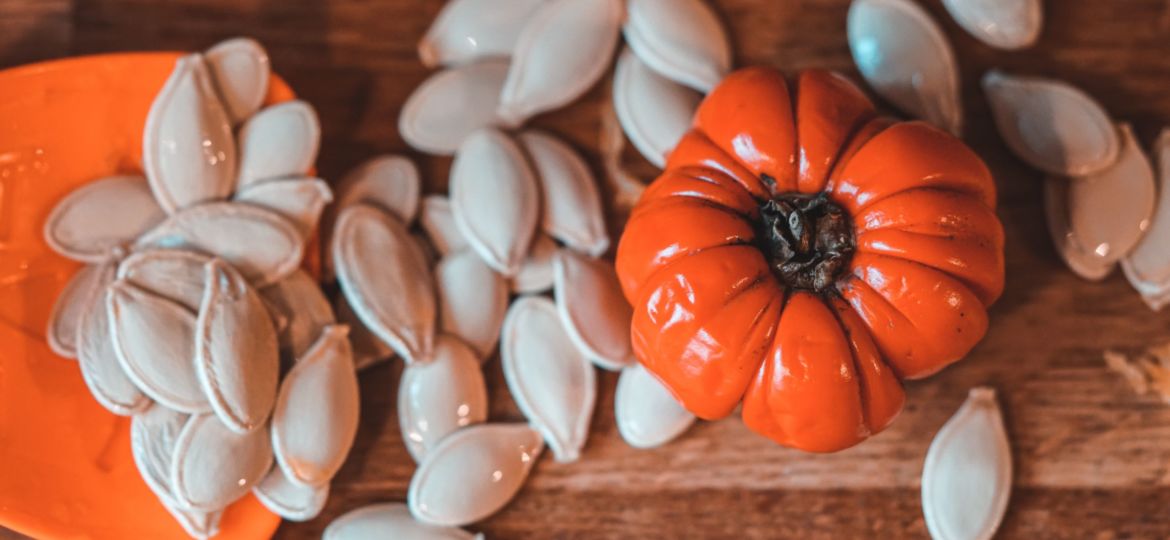
Seed Cycling: Balancing Your Hormones In A Natural Way
Seed cycling is an ancient and gentle way to regulate your hormones by supplying you with the nutrients you need at specific phases of your cycle. Hormonal variations can result in anything from amenorrhea (lack of menses) or dysmenorrhea (irregular menses), to hormonal acne and weight gain. Typically hormonal birth control is used to regulate those hormonal variations and temper symptoms. But if you’re trying to get pregnant or don’t want to be taking hormones, seed cycling is a gentle approach that can help.
In a regular cycle, estrogen is produced during the first 14 days of the follicular phase when eggs grow and ripen. Follicle-stimulating hormone (FSH) and luteinizing hormone (LH) then increase before ovulation, while estrogen levels drop just after ovulation. The Luteal phase starts once an egg has been released. Progesterone and estrogen levels gradually increase in a careful balance to support conception and implantation and they drop again before the next period if no implantation occurs.
Seed cycling posits that the phytoestrogens in flax seeds, when eaten during the follicular phase, can balance out estrogen in the body. Zinc from pumpkin seeds may promote progesterone production. And during the luteal phase, lignans (a precursor to phytoestrogens) in sesame may inhibit estrogen levels from increasing too much, while the vitamin E in sunflower seeds is thought to help boost progesterone levels.
Follicular Phase – Ovulation (Days 1-14): eat 1-2 tablespoons each of raw, fresh ground flaxseeds and pumpkin seeds
Ovulation-Luteal Phase (Days 15-28): eat 1-2 tablespoons each of raw, fresh ground sunflower and sesame seeds
The follicular phase begins at the first day on your menses. Start incorporating fresh ground flax and pumpkin seeds into your diet. You can put these in smoothies, sprinkle on salads, put in granola, or your morning oatmeal.
On day 14, or when you ovulate (this will be different for all women) switch to raw ground sunflower and sesame seeds in the same fashion. If you don’t know when you ovulate, or you’re not ovulating, you can just switch on day 14.
If you don’t know when you ovulate and you’re interested in figuring that out, try ovulation tracking using test strips (which you can get on amazon!) or period tracking can help you estimate your ovulation time. If your cycle is longer or shorter than 28 days, adjust the length of the seed cycle accordingly. If you don’t have a period, you can still seed cycle by following the phases of the moon!
Seed cycling is safe for anyone to try, and increases the healthy fats in your diet which can also promote cardiovascular health and reduce inflammation. Many women continue to use it for years, as there’s no downside other than allergies. If you have allergies to sesame or other nuts and seeds, consult your doctor or acupuncturist before starting this regime.
Citations:
Goyal A, Sharma V, Upadhyay N, Gill S, Sihag M. Flax and flaxseed oil: an ancient medicine & modern functional food. J Food Sci Technol. 2014;51(9):1633-1653. doi:10.1007/s13197-013-1247-9
Can Seed Cycling Ease Menstrual Cycle Complications and Symptoms? https://dutchtest.com/2020/07/
Linus Pauling Institute. Lignans [Internet]. Micronutrient Information Center. 2020 [cited 2020Jan21]. Available from: https://lpi.oregonstate.edu/
Dr. Jolene Brighten. Seed Cycling for Hormone Balance https://drbrighten.com/seed-


